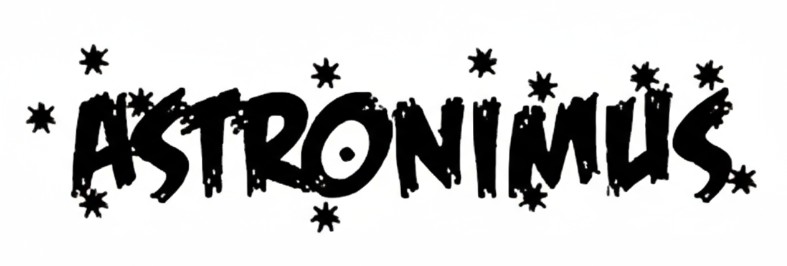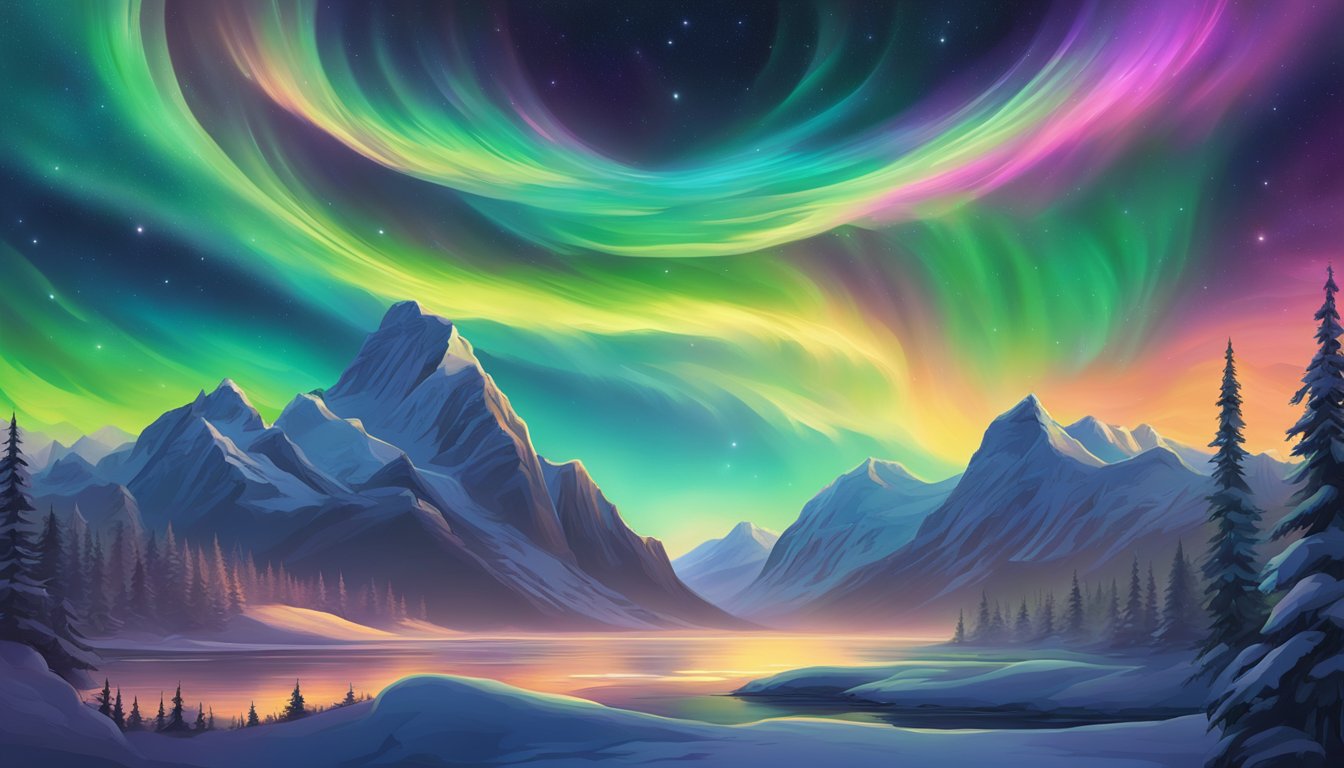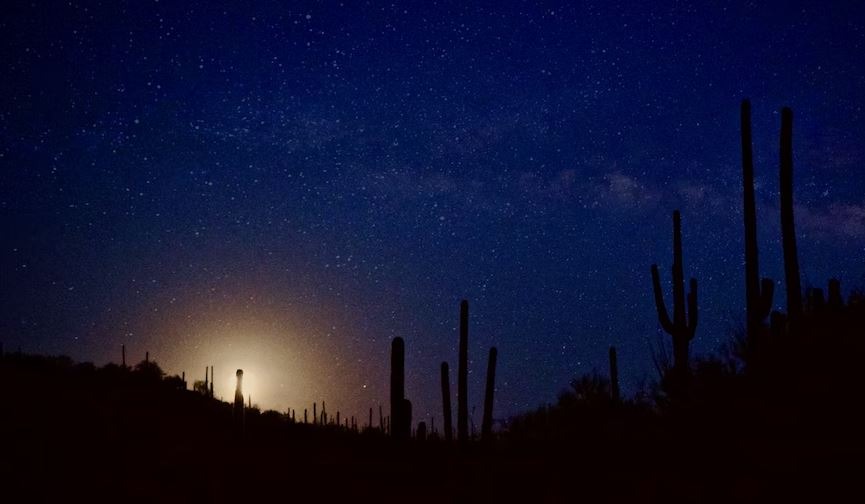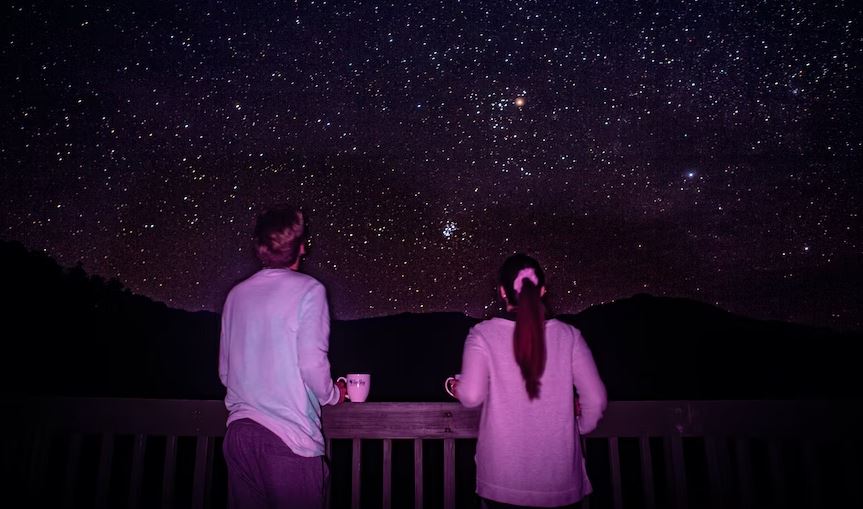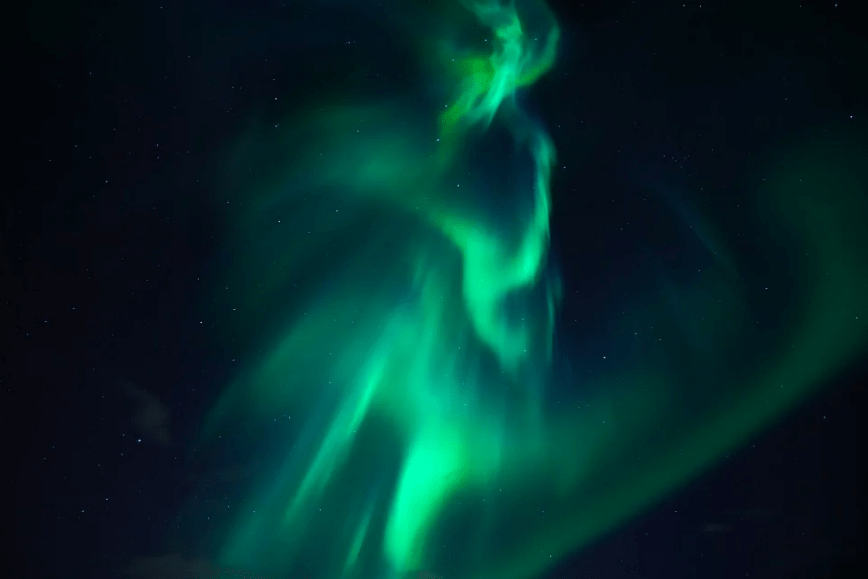How Far South Have the Northern Lights Been Seen?
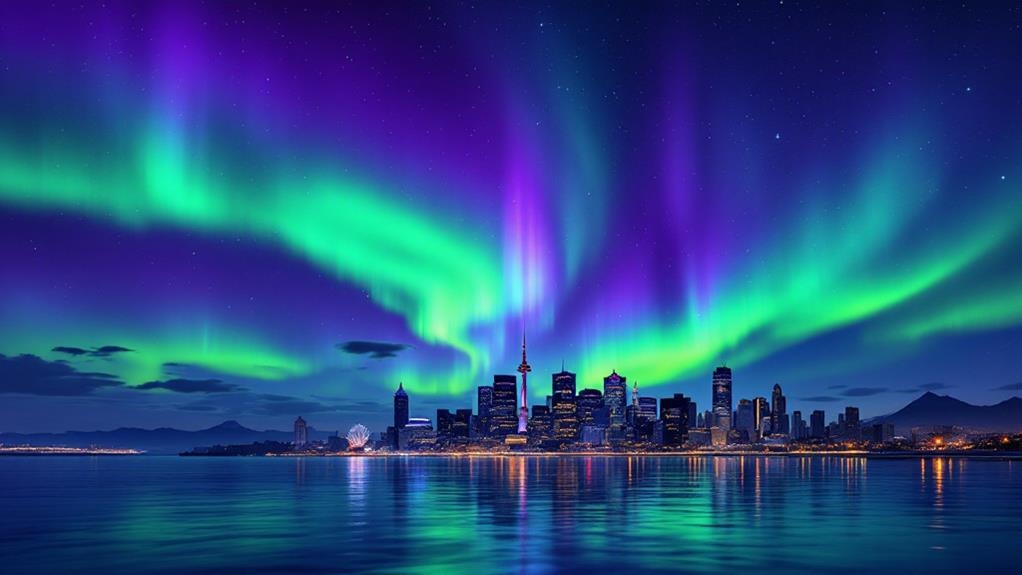
The Northern Lights have been spotted as far south as the equator during extreme solar events. You might be surprised to learn that auroras have been seen in places like Cuba, Hawaii, and even Singapore. These rare low-latitude sightings are typically linked to intense solar activity or space weather events. While it's uncommon to see the Northern Lights so far south, factors like solar wind strength, Earth's magnetic field, and clear dark skies can influence their visibility. Understanding these elements and monitoring solar activity can help you predict when you might catch a glimpse of this celestial spectacle in unexpected locations.
Understanding Aurora Formation
To understand aurora formation, you'll need to grasp the interaction between Earth's magnetic field and solar wind. The process begins when the Sun emits charged particles, primarily electrons and protons, into space. This stream of particles, known as solar wind, travels towards Earth at incredibly high speeds.
As the solar wind approaches our planet, it encounters Earth's magnetic field. The strength of this field deflects most of the particles around the planet, creating a protective shield. However, some particles manage to enter the upper atmosphere near the magnetic poles, where the field lines converge. Runaway Electrons, X-rays, and Gamma Rays arise from intense electrical activity in thunderclouds, which can also contribute to the formation of auroras.
When these charged particles collide with atoms and molecules in the atmosphere, they transfer energy. This energy excites the atmospheric particles, causing them to emit light as they return to their ground state. The colors you see in the aurora depend on which atmospheric gases are involved in this interaction.
The solar wind interaction with Earth's magnetosphere is pivotal for aurora formation. Variations in magnetic field strength and solar activity directly influence the intensity and extent of auroral displays, determining how far south they can be seen.
Factors Affecting Visibility Range
The visibility range of the Northern Lights depends on several key factors. Solar activity plays an indispensable role in determining how far south you can see auroras. During periods of intense solar storms, charged particles bombard Earth's atmosphere more frequently, pushing the auroral oval farther south. This expansion allows people in lower latitudes to witness this celestial spectacle. Contrails can resemble cirrus, cirrocumulus, or cirrostratus clouds, which can also impact the visibility of the Northern Lights. Your geographic location also influences visibility. The closer you are to the magnetic poles, the more likely you'll see auroras regularly. However, atmospheric conditions can affect your view. Clear, dark skies away from light pollution offer the best chances for observation. Atmospheric disturbances like cloud cover, haze, or precipitation can obstruct your view, even during strong geomagnetic activity.
The time of year matters too. Longer nights in winter provide more opportunities to spot auroras, especially in regions with extreme seasonal variations in daylight. Additionally, the moon's phase can impact visibility; a new moon or crescent phase creates darker skies, enhancing your ability to see fainter auroras. By considering these factors, you'll increase your chances of experiencing this breathtaking phenomenon.
Historical Southern Sightings
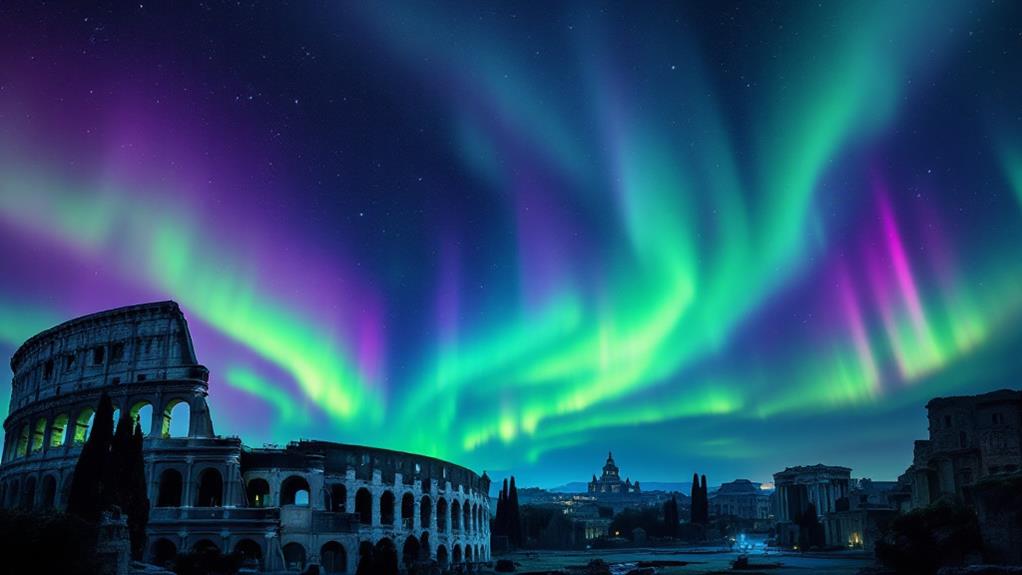
Awe-inspiring accounts of the Northern Lights reaching far south have mesmerized, enchanted, and enthralled people throughout history. You might be surprised to learn that the aurora borealis has been spotted in locations much farther south than you'd expect.
Historical reports document several instances of the Northern Lights appearing in unusual places. During the Carrington Event of 1859, one of the most powerful geomagnetic storms on record, observers witnessed the aurora as far south as Cuba and Hawaii. In 1938, the lights were visible from London, Paris, and even parts of North Africa.
More recently, in October 2003, unusual climate conditions and intense solar activity led to sightings in Texas, Florida, and Mexico. You'd typically need to be much further north to catch a glimpse of this celestial spectacle.
These extraordinary occurrences are rare and often linked to periods of heightened solar activity or extreme space weather events. While you shouldn't count on seeing the Northern Lights from southern latitudes regularly, these historical sightings remind us of the aurora's potential to surprise and delight viewers far beyond its usual range.
Notable Low-Latitude Appearances
When did the Northern Lights venture furthest from their usual Arctic home? You might be surprised to learn that these celestial dancers have made appearances at remarkably low latitudes throughout history. While seasonal variations play a role in aurora visibility, geographic anomalies have allowed for some truly exceptional sightings.
One of the most famous low-latitude aurora events occurred on September 1-2, 1859, during the "Carrington Event." This powerful geomagnetic storm caused auroras visible as far south as Cuba and Hawaii, with reports of the phenomenon seen in Colombia, near the equator. In 1909, another significant display was observed in Singapore, just 1 degree north of the equator.
More recently, in October 2003, the "Halloween Solar Storms" produced auroras visible in Texas, Florida, and even southern California. Europe wasn't left out either, with sightings reported in Mediterranean countries like Spain and Italy. In 2004, observers in Mexico were treated to a rare display, while 2011 saw the Northern Lights grace the skies over Arizona and New Mexico. These exceptional events remind us that, under the right conditions, the aurora's ethereal glow can reach far beyond its typical boundaries.
Predicting Future Southern Occurrences
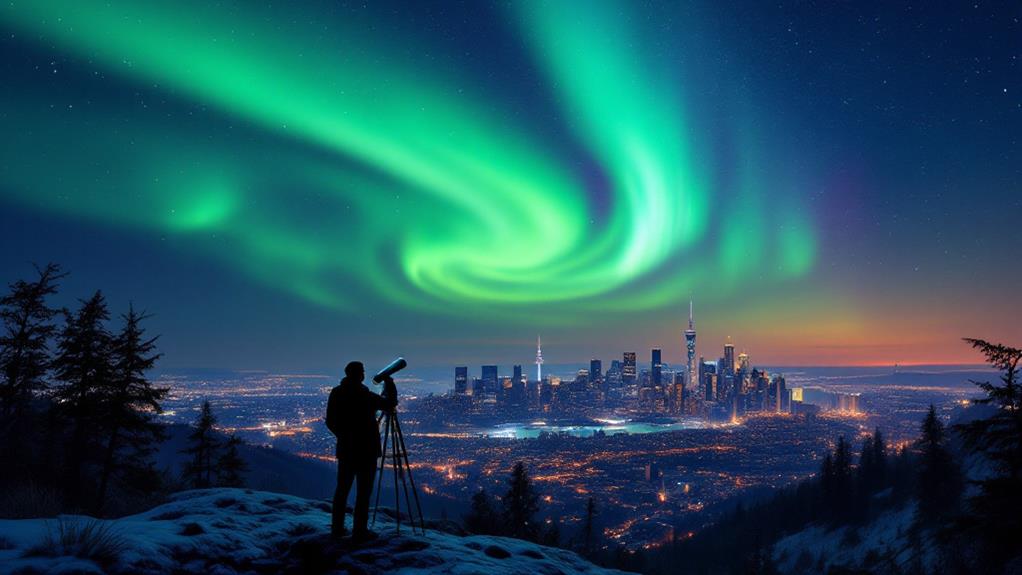
While predicting precise low-latitude auroral occurrences remains challenging, scientists have made considerable progress in forecasting potential southern appearances. By analyzing historical data and patterns of equatorial auroras, researchers can now identify factors that increase the likelihood of these rare events.
You'll find that solar activity impacts play an essential role in determining how far south the Northern Lights can be seen. During periods of intense solar storms, the auroral oval expands, potentially reaching lower latitudes. Scientists monitor solar wind speed, interplanetary magnetic field strength, and coronal mass ejections to assess the probability of auroral displays extending southward.
To stay informed about potential sightings, you can follow space weather forecasts and auroral prediction services. These tools use real-time data from satellites and ground-based observatories to estimate the likelihood of auroral activity at different latitudes. While they can't guarantee a sighting, they'll give you a better chance of witnessing this spectacular phenomenon in unexpected locations. Keep in mind that light pollution and atmospheric conditions also affect visibility, so choosing dark, clear skies will improve your chances of seeing the aurora at lower latitudes.
Frequently Asked Questions
Can the Northern Lights Be Seen From the Southern Hemisphere?
You can't typically see the Northern Lights from the Southern Hemisphere. However, you might witness the Southern Lights, or Aurora Australis, which are the Southern Hemisphere's equivalent. Seasonal variations in auroral activity affect their visibility, with peak periods during equinoxes. Factors affecting auroral visibility in the Southern Hemisphere include solar activity, geomagnetic storms, and your location's latitude. The further south you are, the better your chances of spotting this mesmerizing natural light show in the night sky.
How Long Do Auroral Displays Typically Last?
You'll find that the duration of auroral displays can vary greatly. Typically, they last for a few hours, but you might witness them for just minutes or up to several days. The intensity of auroral displays also plays a role in their longevity. Stronger solar activity often leads to longer-lasting auroras. Remember, even if you're lucky enough to catch a brief display, it's still a breathtaking experience you won't forget. Keep your eyes on the sky!
Are There Different Colors of Northern Lights?
Yes, you'll be amazed by the different hues of auroras you can witness. The northern lights display a range of colors, primarily green, but also pink, red, blue, and purple. These variations in northern lights intensity depend on the type of gas particles colliding in the atmosphere and their altitude. You'll often see a green glow at lower altitudes, while higher altitudes produce rarer red auroras. The mix of colors creates a breathtaking celestial light show.
Can Artificial Light Pollution Affect the Visibility of Auroras?
Yes, artificial light pollution can greatly affect your ability to see auroras. The brighter the light pollution in your area, the harder it'll be to spot the northern lights. You'll have the best chance of seeing them in dark, rural areas away from city lights. Keep in mind that seasonal variations in auroral activity also play a role. During peak seasons, you might spot auroras even with some light pollution, but darker skies will always provide a better viewing experience.
Is It Possible to Hear Sounds Associated With the Northern Lights?
You might be surprised to learn that you can sometimes hear sounds associated with the northern lights. This rare phenomenon, known as audible crackle, has been reported by some aurora viewers. While scientists debate the exact cause, it's believed to be related to atmospheric ionization effects. You may hear faint crackling, hissing, or rustling noises during intense auroral displays. However, don't be disappointed if you don't hear anything—it's an elusive and uncommon experience.
